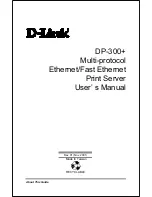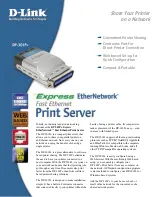
Mode
Description Considerations
Default
Setting
drives in the
server.
Several SSD devices can be allocated to a
shared cache pool, and therefore the cache
size is limited in size only to the amount of
SSDs allocated for this purpose.
Note:
The RFCache driver must be
installed during deployment. Caching
devices can be defined either during the
installation process, or after deployment.
DAS Cache
Read and
write-back
caching
performed by
one or more
dedicated
SSD devices
in the server
DAS Cache uses the full capacity of one or
more SSD devices to provide a large footprint
of both read and write-back caching
resources to the SDS. This caching mode
moves "hot" (active) chunks of data from
HDDs to cache, for Read and Write buffering.
For write-back caching, the write is
temporarily written to the SSD, which is much
faster than an HDD, allowing faster response
of the SDS to write acknowledgment. One
SSD device can accelerate several HDDs (in
DAS Cache they are called "Volumes").
Striping the Cache on two devices is not
supported in the VxFlex Ready Node solution.
Note:
If a fault occurs in the caching
device before the writes have been
offloaded, all the HDD devices cached by
DAS Cache acquire failed status, and a
rebuild process commences in VxFlex OS.
Once the rebuild is over, the caching disk
can be replaced, all caching has stopped
in the storage pool, and the HDD
members in the storage pool can be
cleared of errors.
Disabled
Read RAM Cache settings for SDS
From version 2.x Read RAM Cache is disabled by default on the Storage Pool.
Recommendation: Keep it disabled for SSD/Flash pools. For HDD pools, Read RAM
Cache can help increase performance. If the node is storage only (in other words; is
the node is only used for VxFlex OS), then the recommendation is to turn on Read
RAM Cache for HDD pools and use as much of the server DRAM as possible.
In a converged configuration (where VxFlex OS is sharing the server with other
applications), depending on the available DRAM resources, it may also help to turn on
Read RAM Cache for HDD pools and increase the cache size from the default.
If users wish to enable/disable Read RAM Cache, perform either of the following
steps. Read RAM Cache may be enabled/disabled on the Protection Domain, or for
each SDS in the cluster.
Task
Command
To enable Read RAM cache
Run one of the following commands:
VxFlex OS performance fine-tuning
Dell EMC VxFlex Ready Node AMS User Guide
115
Summary of Contents for EMC VxFlex Ready Node
Page 1: ...Dell EMC VxFlex Ready Node Version 3 x AMS User Guide P N 302 005 733 REV 02 June 2019 ...
Page 10: ...Contents 10 Dell EMC VxFlex Ready Node AMS User Guide ...
Page 12: ...Figures 12 Dell EMC VxFlex Ready Node AMS User Guide ...
Page 14: ...Tables 14 Dell EMC VxFlex Ready Node AMS User Guide ...
Page 18: ...Introduction 18 Dell EMC VxFlex Ready Node AMS User Guide ...
Page 24: ...Introduction to VxFlex Ready Node 24 Dell EMC VxFlex Ready Node AMS User Guide ...
Page 80: ...Architecture 80 Dell EMC VxFlex Ready Node AMS User Guide ...
Page 110: ...VxFlex OS Performance Fine Tuning 110 Dell EMC VxFlex Ready Node AMS User Guide ...
Page 130: ...Managing and Monitoring 130 Dell EMC VxFlex Ready Node AMS User Guide ...
Page 156: ...Managing System Objects 156 Dell EMC VxFlex Ready Node AMS User Guide ...
Page 182: ...Security Management 182 Dell EMC VxFlex Ready Node AMS User Guide ...
Page 188: ...Monitoring the System using the VxFlex OS GUI 188 Dell EMC VxFlex Ready Node AMS User Guide ...
Page 252: ...Reference 252 Dell EMC VxFlex Ready Node AMS User Guide ...
Page 274: ...Common Tasks 274 Dell EMC VxFlex Ready Node AMS User Guide ...
Page 292: ...System events 292 Dell EMC VxFlex Ready Node AMS User Guide ...
Page 324: ...SNMP Trap Support 324 Dell EMC VxFlex Ready Node AMS User Guide ...
Page 348: ...DTK Hardware Update Bootable ISO 348 Dell EMC VxFlex Ready Node AMS User Guide ...
Page 354: ...Glossary 354 Dell EMC VxFlex Ready Node AMS User Guide ...
















































